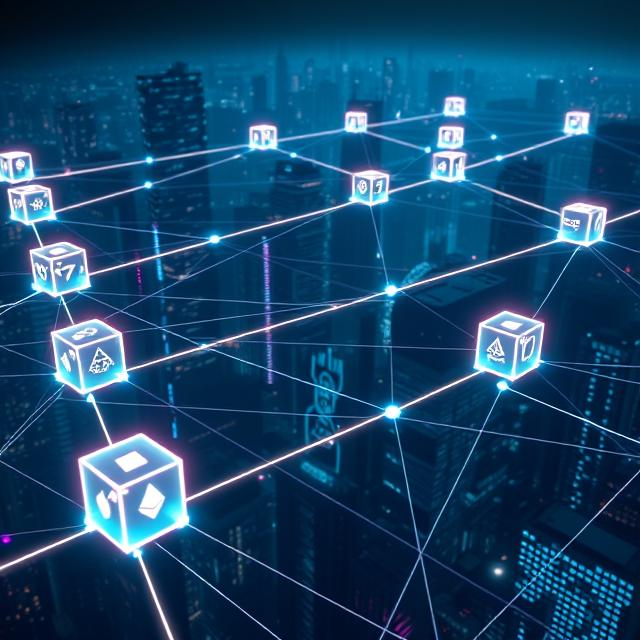Blockchain technology has caused a revolution in many fields, from finance to supply chains. Yet, one problem still exists: different blockchain networks can’t talk to each other. This is where blockchain interoperability steps in letting different blockchains link up, share data, and work together without a hitch.
What is Blockchain Interoperability?
Blockchain interoperability means different blockchain networks can talk and swap info well. , each blockchain works on its own making it hard to move data or tokens between them. Interoperability fixes this by setting up links between different blockchain platforms allowing them to work as a team.
Let’s say you have some crypto on Ethereum but you want to use a service on Binance Smart Chain. Blockchain interoperability lets you do this connecting the two networks.
How Does Blockchain Interoperability Work?
- Cross-Chain Communication: Interoperability happens when different blockchains talk to each other. They swap messages, tokens, or data. A “bridge” often connects two networks to make this happen.
- Token Wrapping: This means changing a cryptocurrency from one blockchain to fit another blockchain. Think of Wrapped Bitcoin (WBTC). It lets you use Bitcoin on platforms that run on Ethereum.
- Multi-Chain Ecosystems: Some platforms, like Polkadot and Cosmos, were built to work well with others. They serve as central points. These hubs link up various blockchain networks in their system. This makes it simpler for these blockchains to chat with each other.
- Atomic Swaps: Atomic swaps allow users to exchange cryptocurrencies across different blockchains. This technology doesn’t need a middleman like a centralized exchange, which is its main benefit.
Why is Blockchain Interoperability Important?
- Better Teamwork: Interoperability helps different blockchain networks work together, which makes them stronger as a group.
- Easy to Use: When blockchains can talk to each other, it’s simpler for people to use them. You don’t need lots of different tools to work with different networks anymore.
- More Ways to Use Blockchains: Connecting blockchains creates new chances. For example, it lets us mix money from different DeFi platforms, which can help markets work better.
- More People Using Blockchains: As more businesses start to use blockchain tech, being able to connect different blockchains makes it easier. Companies can use blockchain without worrying if their system will work with others.
Challenges of Blockchain Interoperability
Even though it has many advantages blockchain interoperability faces several hurdles:
- Different Protocols: Each blockchain operates under its own rules and protocols. This makes it hard to create a standard way for them to talk to each other.
- Security Risks: Tools like bridges that allow blockchains to work together can be weak spots for hackers to attack. This might put people’s money and assets in danger. Any solution that aims to connect blockchains must put safety first.
- Performance Issues: When blockchains connect more, it can mean more transactions. This extra load might slow down some networks.
- Lack of Universal Standards: There’s no agreement on how blockchains should communicate. This limits how well they can work together overall.
Practical Applications of Blockchain Interoperability
Blockchain interoperability has real-world uses that are making various industries better:
- Decentralized Finance (DeFi): Interoperability lets users access DeFi services on many blockchain networks without platform switching. This makes DeFi apps more productive and adaptable.
- Supply Chain Management: Different stakeholders in supply chains might use different blockchains. Interoperability enables them to share data , which boosts transparency and makes operations more productive.
- Cross-Border Transactions: Interoperability speeds up cross-border transactions and cuts costs. Blockchain networks can handle international payments without middlemen.
- Gaming and NFTs: The gaming world now lets players buy and sell in-game stuff or unique digital tokens (NFTs) across different games on various blockchains. This makes the gaming scene more linked up and adaptable for people who play games.
The Future of Blockchain Interoperability
Interoperability has a strong link to the future of blockchain technology. Polkadot’s parachains, Cosmos’ inter-blockchain communication (IBC), and cross-chain bridges are breaking down walls between different blockchain networks. These technologies continue to grow paving the way for a more connected and productive blockchain ecosystem. This unified environment will boost teamwork and spark new ideas in the field.
